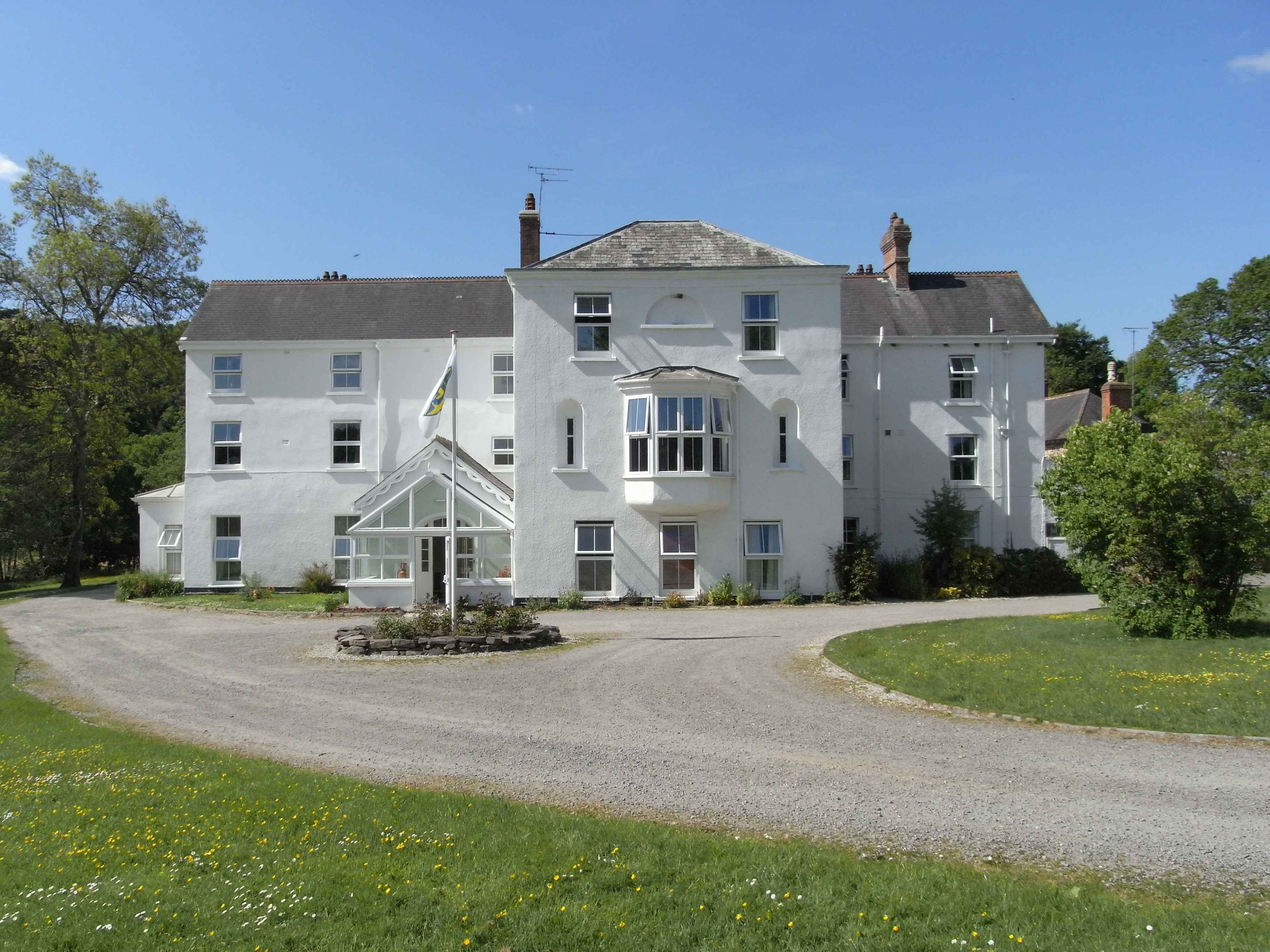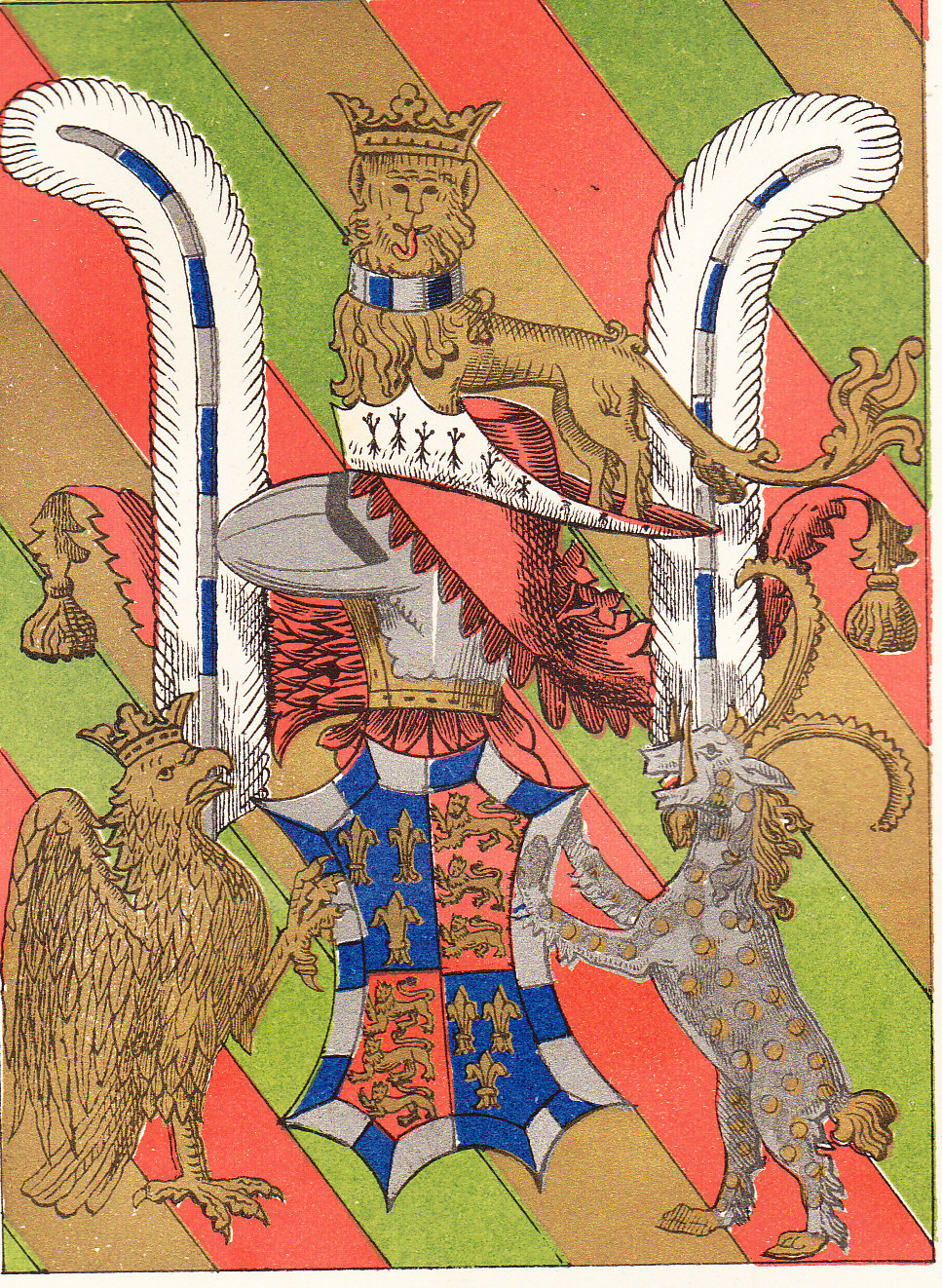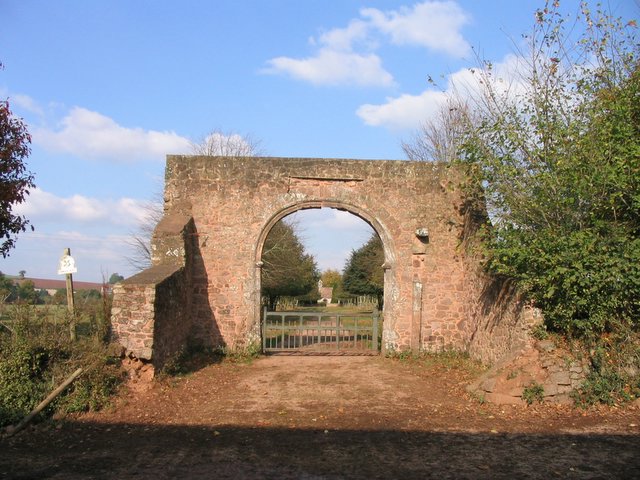|
Denys Rolle (died 1638)
Denys Rolle (1614–1638) of Bicton and Stevenstone in Devon was Sheriff of Devon in 1636. He was one of the biographer John Prince's ''Worthies of Devon''. Origins Denys Rolle was the second but only surviving son of Sir Henry Rolle (died 1617) of Stevenstone by his wife Anne Denys, a daughter and co-heiress of Thomas Denys of Bicton and Holcombe Burnell by his wife Anne Paulet, daughter of William Paulet, 3rd Marquess of Winchester (1532–1598). His father pre-deceased his own father Sir Henry Rolle (1545–1625) of Stevenstone and thus Denys Rolle was heir to his grandfather. He was also heir to the large Denys estates of his mother, including Bicton. Career Rolle was according to most chroniclers a prodigy who died young at the age of 24 before his great potential was fulfilled. The Devon historian Tristram Risdon (died 1640) wrote of him: John Prince (1643–1723) called him Prince then relates an event in his life which illustrated his honourable disposition. Rolle ... [...More Info...] [...Related Items...] OR: [Wikipedia] [Google] [Baidu] |
William Paulet, 3rd Marquess Of Winchester
William Paulet, 3rd Marquess of Winchester ( – 24 November 1598) was an English nobleman, the son of John Paulet, 2nd Marquess of Winchester and his first wife, Elizabeth Willoughby. His maternal grandfather was Robert Willoughby, 2nd Baron Willoughby de Broke. He was made a Knight of the Bath at the coronation of Mary I on 30 November 1553. Career The offices he held during his career included: * Justice of the Peace, Hampshire from c.1559 * Sheriff of Hampshire 1560–61 * Justice of the Peace, Dorset from 1564 * Commissioner for the Musters, Dorset 1569 * High Steward, Dorchester by 1570 * Joint Lord Lieutenant of Dorset 1569 and 1585/6-98 * Member of Parliament for Dorset 1571 * Joint Lord Lieutenant of Hampshire 1585 * Lord Lieutenant of Hampshire 1585–86 * Lord High Steward for the funeral of Mary, Queen of Scots, 1 August 1587 * Lord Lieutenant of Hampshire 1596 * Commissioner for Ecclesiastical Causes, Diocese of Winchester 1597 Paulet was summoned to Parliame ... [...More Info...] [...Related Items...] OR: [Wikipedia] [Google] [Baidu] |
Strand (London)
Strand (or the Strand) is a major thoroughfare in the City of Westminster, Central London. It runs just over from Trafalgar Square eastwards to Temple Bar, where the road becomes Fleet Street in the City of London, and is part of the A4, a main road running west from inner London. The road's name comes from the Old English ''strond'', meaning the edge of a river, as it historically ran alongside the north bank of the River Thames. The street was much identified with the British upper classes between the 12th and 17th centuries, with many historically important mansions being built between the Strand and the river. These included Essex House, Arundel House, Somerset House, Savoy Palace, Durham House and Cecil House. The aristocracy moved to the West End during the 17th century, and the Strand became known for its coffee shops, restaurants and taverns. The street was a centre point for theatre and music hall during the 19th century, and several venues remain on the S ... [...More Info...] [...Related Items...] OR: [Wikipedia] [Google] [Baidu] |
Great Torrington
Great Torrington (often abbreviated to Torrington, though the villages of Little Torrington and Black Torrington are situated in the same region) is a market town in Devon, England. Parts of it are sited on high ground with steep drops down to the River Torridge below, with the lower-lying parts of the town prone to occasional flooding. Torrington is in the centre of Tarka Country, a landscape captured by Henry Williamson in his novel ''Tarka the Otter'' in 1927. Great Torrington has one of the most active volunteering communities in the United Kingdom. In July 2019, Great Torrington was reported to be the healthiest place to live in Britain. Researchers from the University of Liverpool found that the area had low levels of pollution, good access to green space and health services, along with few retail outlets. History There were Iron Age and medieval castles and forts in Torrington, located on the Castle Hill. Great Torrington had strategic significance in the English ... [...More Info...] [...Related Items...] OR: [Wikipedia] [Google] [Baidu] |
Beam, Great Torrington
Beam is an historic estate in the parish of Great Torrington, Devon, England. Beam House is situated about 1 1/2 miles north-west and downstream of that town, on the right-bank of the River Torridge. Both the Rolle Canal and the railway crossed the river nearby. It occupies a particularly beautiful setting, described by Lauder (1986) thus: ''"For lovers of rivers and woodland there can be few lovlier settings for a house than this. Steeply wooded banks shelter the valley and the house is situated on slightly higher ground above lush water meadows, almost completely surrounded by the Torridge"'' The estate was a subsidiary seat of the Rolle family, lords of the manor of Great Torrington, whose main seat was Stevenstone on the other (south) side of that town and therefore upstream from Beam. It was an outpost of the Royalists during the Civil War. Much of the estate is today owned by Baron Clinton, as heir to the Rolles, but it has had many occupants, including use by the army i ... [...More Info...] [...Related Items...] OR: [Wikipedia] [Google] [Baidu] |
Baron Clinton
Baron Clinton is a title in the Peerage of England. Created in 1298 for Sir John de Clinton, it is the seventh-oldest barony in England. Creation and early history The title was granted in 1298 to Sir John de Clinton, a knight who had served in the Scottish and French wars. The peerage was created by writ, which means that it can descend through both male and female lines. It is thus one of the most ancient English titles still in existence. William, the younger son of the first Baron, was also summoned to parliament by writ on 6 September 1330 as Baron de Clynton, even though his elder brother, the second Baron, was sitting in parliament under the same title. He was created Earl of Huntingdon in 1337. The second Baron, John, fought with the king's army, which defeated Edward II's cousin Thomas, Earl of Lancaster, at the Battle of Boroughbridge in 1321. He was knighted by 1324. The third Baron fought at the Battle of Poitiers in the Hundred Years' War and was the Constabl ... [...More Info...] [...Related Items...] OR: [Wikipedia] [Google] [Baidu] |
Achievement (heraldry)
In heraldry, an achievement, armorial achievement or heraldic achievement (historical: hatchment) is a full display or depiction of all the heraldic components to which the bearer of a coat of arms is entitled. An achievement comprises not only the arms displayed on the escutcheon, the central element, but also the following elements surrounding it: * Crest placed atop a: * Torse (or Cap of Maintenance as a special honour) * Mantling * Helm of appropriate variety; if holder of higher rank than a baronet, issuing from a: * Coronet or Crown (not used by baronets), of appropriate variety. * Supporters (if the bearer is entitled to them, generally in modern usage not baronets), which may stand on a Compartment * Motto, if possessed * Order, if possessed * Badge, if possessed Coat of arms Sometimes the term "coat of arms" is used to refer to the full achievement, however this usage is incorrect in the strict sense of heraldic terminology, as a coat of arms refers to a garme ... [...More Info...] [...Related Items...] OR: [Wikipedia] [Google] [Baidu] |
Highnam
Highnam is a village and civil parish on the outskirts of the city of Gloucester. It is three miles northwest of the city on the A40, on the way to Ross, west of Alney Island and Over Bridge. It is connected by Segregated Bicycle Paths via Over Bridge and Alney Island to Gloucester. The parish includes the villages of Lassington and Over. In the 2001 census the parish had a population of 2,014, reducing to 1,916 at the 2011 census. Highnam was originally made up of farm land, which explains some of its street names (Brimsome Meadow, Poppy Field, Stoney Field, Long Field, Peters Field, Williams Orchard, et al.). As a village, Highnam is fairly small, containing few social amenities. These include the Church of the Holy Innocents, a school (Highnam C of E Primary), a village hall, a day nursery, a village shop and a doctor's surgery. The Arnold family were Lords of the Manor in the sixteenth century- the best known member of the family is Sir Nicholas Arnold (died 1580), ... [...More Info...] [...Related Items...] OR: [Wikipedia] [Google] [Baidu] |
Burlescombe
Burlescombe (, ) is a village and civil parish in the Mid Devon district of Devon, England. The parish is surrounded, clockwise from the north, by the parishes of Holcombe Rogus, Culmstock, Uffculme, Halberton and Sampford Peverell. According to the 2001 census it had a population of 911. The village is about south west of Wellington in Somerset. The ruins of the 12th century Canonsleigh Abbey are nearby. Burlescombe is part of the electoral ward of Canonsleigh. The population of this ward was 3,218 at the 2011 Census. History The parish was formerly divided into four tithings and hamlets: the Town Tithing, Appledore, Westleigh and Ayshford. In 1872 the lord of the manor was Edward Ayshford Sandford, Esq., in which year much of the parish belonged to the heirs of Sir William Follett, namely R. H. Clarke Esq, Henry Dunsford Esq., and other freeholders As part of the construction of the Grand Western Canal in about 1810, several bridges and culverts were constructed at Burl ... [...More Info...] [...Related Items...] OR: [Wikipedia] [Google] [Baidu] |
Columb John
Columb John (today "Columbjohn") in the parish of Broadclyst in Devon, England, is a historic estate that was briefly the seat of the prominent Acland family which later moved to the adjacent estate of Killerton. Nothing of the structure of the Acland mansion house survives except the arch to the gatehouse, dated about 1590, and the private chapel, restored in 1851. The site of the former mansion house is one mile due west of Killerton House. Descent of the estate The Devon Domesday Book tenant-in-chief of ''Colum'' in 1068 was Fulchere, also known as "Fulchere the Bowman", one of the king's lesser tenants. He held it in demesne. It passed to the Culme family and the estate was subsequently held by Reginald de Clifford. By the 12th century it was held by the Prideaux family until the Courtenay Earls of Devon acquired the estate from Sir John Prideaux. The estate was then granted to Richard Bampfield who died in 1430 with no male children, and thus the estate escheated to Thoma ... [...More Info...] [...Related Items...] OR: [Wikipedia] [Google] [Baidu] |
Sir John Acland, 3rd Baronet
There have been four baronetcies created for members of the Acland family, which originated in the 12th century at the estate of Acland in the parish of Landkey, North Devon, two in the Baronetage of England and two in the Baronetage of the United Kingdom. Acland baronets, of Columb John (1644/1678) The Acland Baronetcy, of Colum John (modern: Columbjohn, near Broadclyst) in the County of Devon, was created in the Baronetage of England on 24 June 1644 for John Acland, a supporter of Charles I. However, the letters patent were lost in the confusion of the Civil War. He was succeeded by his son, the second Baronet. He died as a minor and was succeeded by his younger brother, the third Baronet. On his death the title passed to his son, the fourth Baronet. He also died young and was succeeded by his uncle, the fifth Baronet. On 21 January 1678 he was granted new letters patent, confirming him in the title, with the precedence of 1644. Acland later represented Barnstaple an ... [...More Info...] [...Related Items...] OR: [Wikipedia] [Google] [Baidu] |
Entail
In English common law, fee tail or entail is a form of trust established by deed or settlement which restricts the sale or inheritance of an estate in real property and prevents the property from being sold, devised by will, or otherwise alienated by the tenant-in-possession, and instead causes it to pass automatically by operation of law to an heir determined by the settlement deed. The term ''fee tail'' is from Medieval Latin , which means "cut(-short) fee" and is in contrast to "fee simple" where no such restriction exists and where the possessor has an absolute title (although subject to the allodial title of the monarch) in the property which he can bequeath or otherwise dispose of as he wishes. Equivalent legal concepts exist or formerly existed in many other European countries and elsewhere. Purpose The fee tail allowed a patriarch to perpetuate his blood-line, family-name, honour and armorials in the persons of a series of powerful and wealthy male descendants. By kee ... [...More Info...] [...Related Items...] OR: [Wikipedia] [Google] [Baidu] |

.jpg)
_(LOC)_(16333586239).jpg)




